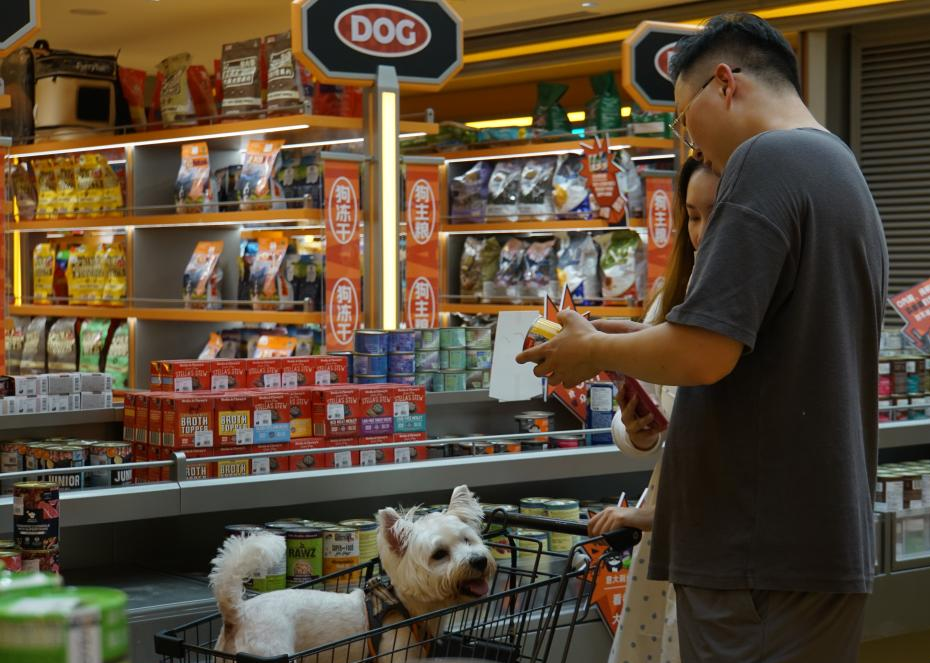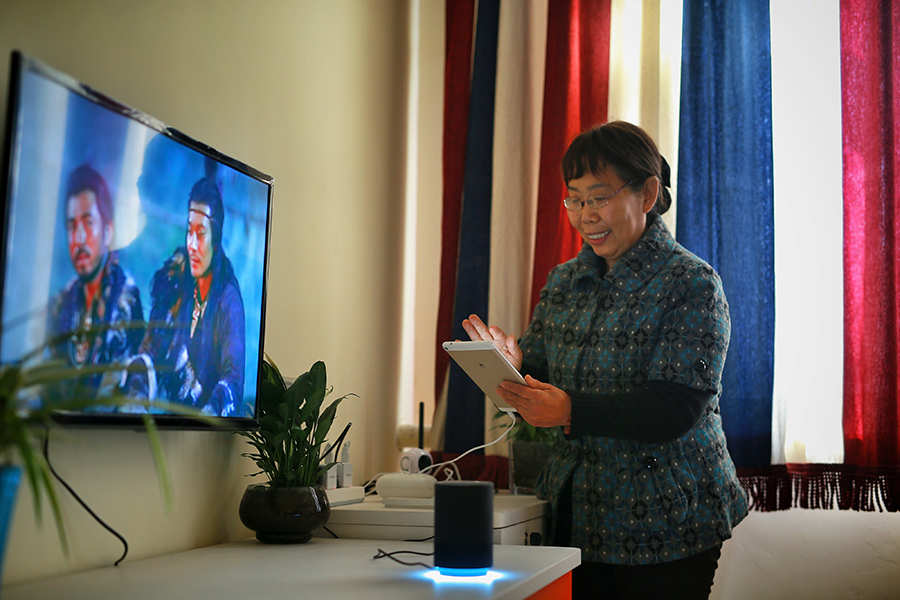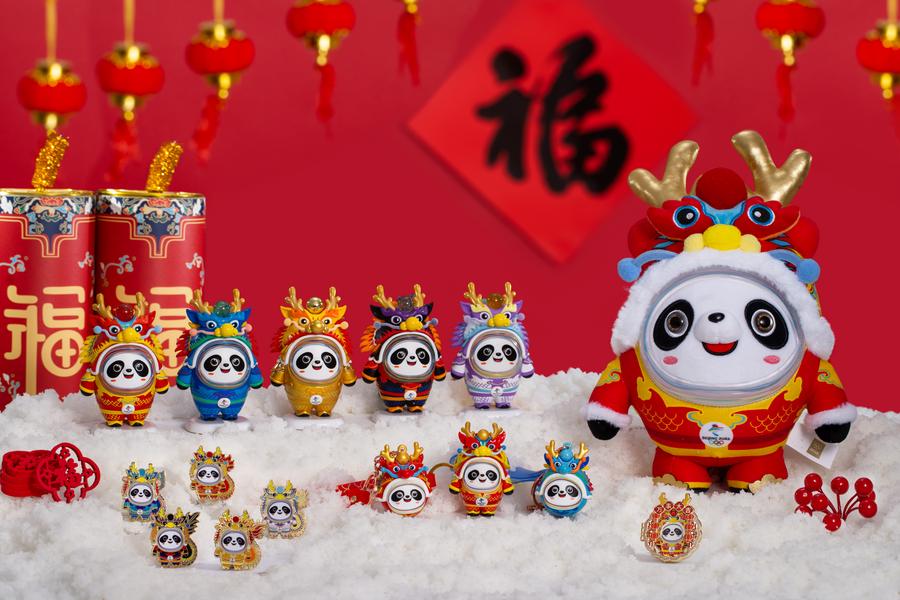China's major consumption trends in 2023
China's consumer spending trends have seen a positive upturn as consumer spending contributed 83.2 percent to economic growth during the first three quarters of 2023, the Guangming Daily reported.
This surge in consumer activity marks an improvement in spending patterns, which have become more rational and individualized.
The young consumer group, who were born between 1995 and 2009, has emerged as a driving force in the consumer market. They are exploring diverse and personalized consumption styles, reshaping the market structure.
Let's have a look at the major consumption trend in 2023.
Flourishing pet economy

Pet owners shop with their pet at Marsmart pet store in Chaoyang district of Beijing, Aug 16, 2023. [Photo/Xinhua]
China's pet economy is projected to reach 592.8 billion yuan ($83.19 billion) by 2023, following a compound growth rate of 20.2 percent from 2015 to 2020, according to iiMedia Research released on Nov 14.
People now see pets as family members rather than just emotional companions, leading to higher spending on pet-related expenses, according to the Report on the Operation Status and Consumer Market Monitoring of China's Pet Industry from 2023 to 2024 by iiMedia Research.
The trend has propelled growth across various segments such as pet food, supplies, medical care and entertainment, indicating expansive opportunities within China's pet economy.
The majority of pet owners in China are corporate professionals, accounting for 63.8 percent, finding comfort in pets amid work stress. There are 42.1 percent of adults aged 26-30 who have pets, due to a rising number of single-person households.
Its research data shows that Chinese pet owners primarily spend on pet food, supplies and healthcare in 2023.
Among these expenses, cleaning and care products represent the majority at 79.2 percent, while preferences for food choices lean towards dry food (61.1 percent) and snacks (57.8 percent).
Moreover, items catering to digestive health maintain popularity, accounting for 60.2 percent of purchases.
Pet owners typically buy food 1-2 or 3-4 times monthly; with over 84.56 percent of owners annually spending more than 500 yuan.
Surge in guochao consumption
The guochao consumption trend-the rise of homegrown brands that weave Chinese cultural elements into their design or branding has surged, propelling high-quality and reasonably priced domestic goods to popularity.
Among various categories such as daily necessities, cosmetics and food, time-honored brands have become highly coveted.
The Research Report on China's New Domestic Goods Consumption Behavior Monitoring and Development Trend from 2023 to 2024 by iiMedia Research shows that 88.34 percent of consumers believe that the product quality of national brands has improved.
The market for Chinese hanfu, or traditional Chinese costumes, is growing steadily. It's expected to be worth 144.7 billion yuan in 2023 and might reach 241.8 billion yuan by 2027.
In 2023, half of the buyers (50.79 percent) were drawn to hanfu because they loved its cultural significance, while the other half (50.50 percent) wanted to support traditional Chinese culture.
Among consumers of domestic products, 87.06 percent have a monthly household income surpassing 5,000 yuan, with 49.15 percent exceeding 10,000 yuan.
The majority of consumers are from second-tier cities, with 28.38 percent residing in first-tier cities, 24.4 percent in emerging first-tier cities, and 25.88 percent in second-tier cities, according to the report.
Young people are more interested in domestically made products, with 61.07 percent between 19 and 35 years old, and 35.30 percent aged 36 to 50.
In 2023, 54.93 percent of consumers showed confidence in the future growth of domestic brands, according to the research report.
City walks becoming popular

Visitors wander through Cinna Lane, or Xinan Li, in downtown Nanjing, the capital of Jiangsu province. [PHOTO/CHINA DAILY]
City walks have become a trending pastime for young Chinese in 2023. The walks involve immersive exploration of the city on foot to discover historic landmarks, cultural sites and unique spots.
This trend contrasts with the prevalent 'military-style' travel, a recent fashion among Chinese college students. It involves spending minimal money to visit multiple places during the weekend, seldom taking breaks or even sleeping. In essence, city walks emphasize a slower pace and an immersive urban stroll.
The phenomenon has become so widespread that there are more than 570,000 related posts on the social media platform Xiaohongshu. Paid organized walks have been springing up in major cities such as Beijing, Shanghai, Guangzhou and Chengdu, offering routes that range from around 10 yuan ($1.4) to more than 100 yuan in price.
Many people choose to plan their routes, exploring the city without any predetermined itinerary. Since July, local authorities in Beijing, Nanjing and Xi'an have been promoting classic city walk routes to the public.
Emphasis on outdoor activities
Lately, Cityride, a style of urban cycling, has become quite the hit among young people, evolving into a new lifestyle that emphasizes a low-carbon footprint, wellness and social connections.
The outdoor lifestyle trends report for 2023, released by the social media platform Xiaohongshu, shows an almost 400 percent surge in cycling-related posts between January and October 2023. These posts garnered an overall readership that surpassed 1.3 billion.
The report also shows that outdoor activities have become integrated into daily life and popular among the public. From January to October, daily active outdoor users surged by over 100 percent. Activities such as hiking, cycling, camping, fishing, diving, surfing and skiing have become part of the new lifestyle.
The China Outdoor Sports Industry Development Report (2022-2023), released in October, shows an increase in outdoor activities such as winter sports, running, cycling, off-road adventures and camping from 2022 to 2023.
In the first half of 2023, orders related to outdoor sports increased by 79 percent compared to the same period in 2022 and spiked by 221 percent compared to 2019.
The post-90s generation now constitutes the largest consumer segment in outdoor sports, accounting for 36.1 percent. While, women have broken the stereotype of outdoor activities being male-dominated, comprising 59.9 percent of participants, the Economic Information Daily reported.
Silver economy on the rise

An elderly woman uses intelligent control systems on a tablet to operate home appliances at an elder care center in Beijing. [PHOTO/CHINA DAILY]
The silver economy has emerged as an industry-tailored for the growing elderly demographic in China, and their purchasing power has outpaced that of younger generations, especially in fashion, the CCTV News reported.
For instance, data shows that online sales of summer wear for those aged 56 and above have surged tenfold year-on-year, while accessory sales such as pearl earrings and pendants have soared over 150 percent.
According to the 2023 Silver Economy Report by QuestMobile, as of September 2023, the user base of the senior population has reached 325 million, marking a 7.6 percent year-on-year increase. Their online presence has risen to 26.5 percent, up by 1.3 percentage points from the previous year.
The online consumption ability and willingness of the senior population are also increasing. In September, the percentage of seniors capable of spending over a thousand yuan increased by 1.6 percent from the same period last year, and the willingness for mid-to-high-end consumption increased by 2.4 percent from the previous year.
Further, as seniors' awareness of online payment security rises, their engagement in mobile payments has accelerated. Over 150 million seniors conducted digital transactions through payment settlement apps in September 2023.
Dopamine consumption brings emotional value

This photo from Nov 29, 2023, shows the Chinese zodiac dragon version of the Beijing Winter Olympic Games mascot Bing Dwen Dwen and associated licensed products. [Photo/Xinhua]
This summer witnessed the emergence of a dopamine fashion trend. To cater to consumer demands, brands embraced this trend by infusing their products with bright, saturated colors.
The dopamine phenomenon extended beyond the realm of fashion into catering, beauty and other industries, the Workers' Daily reported.
Dopamine dress, dopamine makeup, dopamine coffee, dopamine tea and other drinks have quickly become popular.
Industry experts attribute the surge in the "dopamine" trend to its ability to stir positive emotions, meeting the current consumer demand for emotional release and stress relief.
With over 260 million Generation Z individuals (born between 1995 and 2009) in China, constituting more than 18 percent of the total population, Tencent's Generation Z Consumption White Paper said their penchant for personalized self-expression and using consumption as a means to express emotions.
Consumers are looking for products that provide emotional value during 2023's Double 11 shopping festival, the Xinhua reported.
Sales figures surged within the first hour of the Tmall's Double 11 shopping festival: e-sports keyboard shafts saw a 600 percent year-on-year increase.
While cycling-related products skyrocketed, with motorcycle sales growing by 101 percent, road bikes by 300 percent, and sales of riding, skiing, and outdoor footwear increasing by 300 percent on a yearly basis.
The digital industry like cell phones recorded a turnover surpassing last year's shopping gala figures, totaling 4,791 brands.
Focusing on smart living
Intelligent home appliance products, such as robot vacuum cleaners and smart dishwashers, have seen booming sales and are enjoying rising popularity among Chinese consumers.
Until the third quarter of 2023, the cleaning appliance market has seen a dual growth in both sales and volume, according to Beijing-based consultancy All View Cloud.
Among these, robot vacuum cleaners have secured a dominant position in the market, with sales reaching 7.74 billion yuan, accounting for 37.9 percent of the category.
By mid-year, all-purpose robotic floor sweepers had reached 70.3 percent, doubling their adoption rate from last year, which stood at 34.3 percent.
China's intelligent small home appliances market has shown a consistent growth trend. In 2021, the market size was 155.7 billion yuan, and it is expected to reach 192.4 billion yuan by 2023, according to iiMedia Research.
Photos
Related Stories
- Conference in Chengdu highlights 'sport plus culture' development strategy
- Year-ender: 10 awe-inspiring stories in China
- China starts national economic census
- European experts' view on China's practice of humanomics in new era
- China expected to maintain steady growth
- More policy support sought to boost demand
Copyright © 2024 People's Daily Online. All Rights Reserved.









